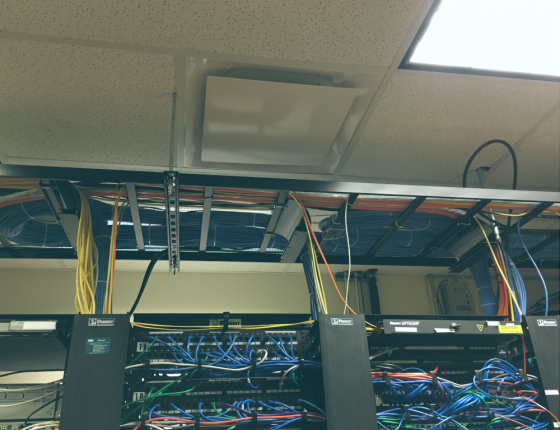This project developed, implemented, and assessed a pilot program targeting SEDCs in Minnesota, with the intent of helping utility programs deliver cost-effective energy savings.
Literature Review
The project team performed a literature review of studies by the Minnesota Technical Assistance Program, Natural Resource Defense Council, Cadmus Group , and Lawrence Berkeley National Laboratory to learn from their experiences with data center energy efficiency opportunities and challenges, and used those observations to guide project design and implementation
Electronic Survey
The project team developed an electronic survey to help discern the IT services of SEDCs in Minnesota and identify opportunities for energy savings. Outreach efforts resulted in 134 responses, including 35 server rooms under 200 to 1,000 square feet (26%) and 47 data closets under 200 square feet (35%).
Many of the survey respondents had already adopted some energy efficiency measures like server virtualization and cloud services and computing. For those that had not, the main concerns were cost, security, and maintenance/staffing.
Field Study
A total of eleven sites representing commercial, institutional, and industrial sectors were recruited to participate in the field study. The sites included a total of 24 SEDCs (10 server rooms and 14 network closets). The project team monitored energy use at the sites over several months to acquire a baseline and recommend possible energy efficiency measures. Before working with IT staff at each site to plan and test strategies to reduce SEDC energy use and monitor post-installation to assess the energy saving impacts.
Operational Efficiency Measures
Energy savings can be achieved fairly quickly and at low cost by powering down IT equipment during non-work hours or times of non-utilization, which can account for about 60% of the work week (including overnight hours and weekends). These simple scheduling changes avoid downtime in IT services and can be easily implemented and reversed if issues arise.
Airflow and Cooling Opportunities
For SEDCs with dedicated cooling systems, relying on the thermostat set point can result in overcooling. Monitoring air temperatures at the server inlets can now be done with inexpensive monitors, allowing for more precise and efficient cooling strategies. Hot aisle and/or cold aisle containment can reduce cooling loads by minimizing the mixing of cooled and heated air in the server room.
Equipment Upgrades
Equipment refresh rates for the SEDCs in this study were generally two to three times that of larger data centers. Equipment upgrades can bring greater energy efficiency as new models and improved technologies provide more capabilities, and as equipment certifications like ENERGY STAR allow for more informed energy choices.
Program Recommendations
Utility Implementation. Utility programs should focus on leveraging opportunities where a number of sites are reached and packaging SEDC savings with other building measures to help justify programmatic transactional costs and increase the cost effectiveness.
IT Training. Education, incentives, and marketing from utility programs can help spur interest and increase motivation among IT staff to reduce SEDC energy use.
Institutional Purchasing Policies. Institutional purchasing policies should be adjusted to require ENERGY STAR certified data center equipment.
Cloud Services. To reduce energy costs, any services that can be migrated to cloud services as a way to reduce IT equipment should be encouraged.
Project Summary
Objective
- Develop a non-intrusive, low-cost method for measuring power usage in data centers.
- Gather information needed to pilot a cost-effective, industry accepted utility programs for SEDCs.
Scope
- Conducted market research to better understand market characterization, customer barriers and opportunities.
- Measured energy use of 24 SEDC's.
Non-energy benefits
The additional benefits include increased server up time, improved disaster recovery, and reduced capital costs.
Related Reports
